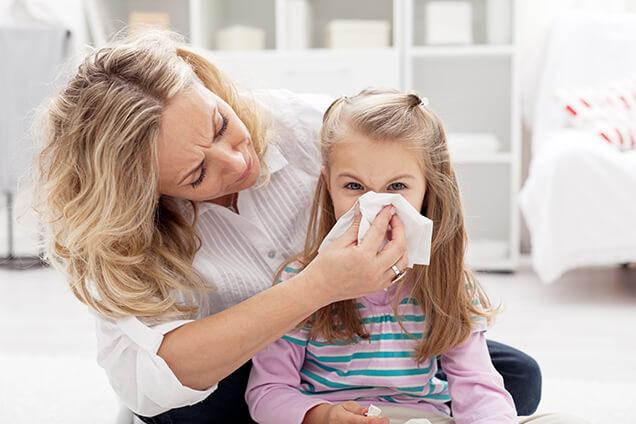
Peak allergy season starts in December and runs through February in Austin, TX. The main allergen that you have to worry about during this time is mountain cedar pollen. Another allergy season pops up from March through May due to pollen from oak and other trees. Fortunately, there is a way to combat allergy season at home, starting with your HVAC system.
Air Filtration
Your HVAC system does more than just heat or cool your home. It also plays a critical role in filtering the air you breathe. A clean, properly maintained HVAC filter helps capture dust, pet dander, pollen, and other airborne particles that can trigger allergy symptoms or worsen indoor air quality.
The MERV (Minimum Efficiency Reporting Value) rating of your filter determines how effectively it traps airborne contaminants. Filters with higher MERV ratings capture smaller particles, which can be beneficial for controlling allergy symptoms. However, it’s important to choose a filter with a MERV rating that’s compatible with your system. Filters that are too restrictive can reduce airflow, forcing your system to work harder and potentially leading to premature wear or higher energy bills. Most residential heating and cooling systems can handle filters with a MERV rating between 8 and 12. If you are unsure what your system can handle, it’s best to check the manufacturer’s specifications or ask an HVAC technician before switching to a higher-rated filter.
Regardless of the filter type, routine replacement is essential. A clogged filter will do a poor job of removing allergens from your home’s air. A general guideline is to change your filter at least every three months. However, you may need to replace yours more often. Factors like if you have pets, high pollen counts, and how many people live in your home can cause the filter to become dirtier faster. Many homeowners inspect their filters once a month to ensure they know when it is time for a fresh one.
Humidity Control
Humidity plays a major role in allergy symptoms. High moisture levels can encourage the growth of mold, mildew, and dust mites. These are all common allergens that thrive in damp environments. On the other hand, overly dry indoor air, especially during Austin’s winter allergy season, can irritate your throat and nasal passages, making it harder for your body to flush out pollen, like mountain cedar, naturally.
Adding a whole-home humidity control system can help by adjusting the moisture levels in the air circulating through your HVAC system. Humidifiers and dehumidifiers work alongside your heating and cooling equipment to maintain a balanced indoor humidity level, ideally between 30% and 50%. This range helps prevent both dryness and excessive moisture, creating a more comfortable and allergy-friendly environment in your home.
Air Duct Cleaning
Over time, allergens and dust can settle inside your home’s ductwork. As your HVAC system circulates air, it can stir up these particles and distribute them throughout your home, worsening allergy symptoms with each cycle.
Professional air duct cleaning helps remove built-up allergens and debris, improving indoor air quality and making it easier to manage allergy flare-ups. During the cleaning process, technicians use specialized tools to reach deep into the ductwork and remove dust, pollen, and other contaminants without damaging the system.
For most homes, scheduling air duct cleaning every two to three years is a good rule of thumb. However, more frequent cleanings may be worth considering if you have pets or are concerned about seasonal pollen.
Air Purification
Another way you can use your HVAC to help with allergens is by adding an air purifier to your setup. Unlike standard filters, which mainly trap larger particles, air purifiers are designed to capture and neutralize much smaller contaminants.
Whole-home air purifiers are installed directly into your HVAC system, so they treat the air as it moves through the ductwork. This means every room benefits from cleaner air, not just the areas where a portable unit might reach. Some systems use UV light or activated carbon in addition to high-efficiency filters, offering extra protection during peak allergy seasons in Austin.
Contact Your Local Indoor Air Quality Experts
At Totally Cool Heating & Air, we want to help you create the healthiest and most comfortable home possible. We offer a wide range of HVAC services, including installations, repairs, tune-ups, and air quality solutions. Contact us today to schedule an appointment with one of our experienced technicians.
